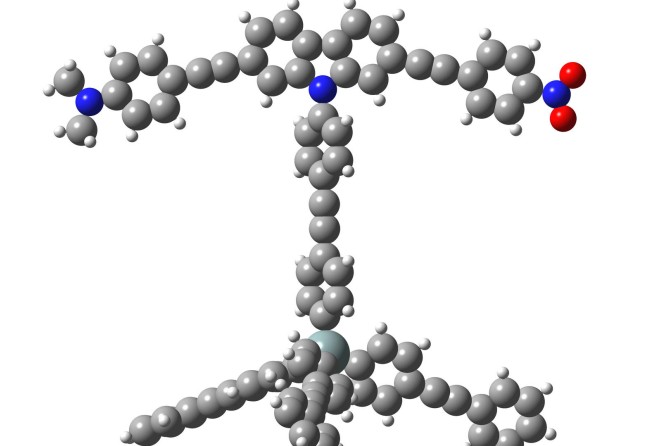Hong Kong researcher working to develop smallest machines to make big discoveries

Nanomachines are among the smallest machines ever built, and Michel Van Hove is leading efforts to develop this nascent technology in Hong Kong.
"They're a billion times smaller than human beings" he says. "To get a sense of that, imagine one billion people standing in a line. The queue would stretch all the way to the moon."
Director of the Institute of Computational and Theoretical Studies and acting chair of the physics department at Hong Kong Baptist University, Van Hove has been awarded funding by the government's Research Grants Council over three years to study this technology with enormous commercial and industrial potential.
Nanomachines already exist in nature. Bacterial cells have tails, called flagellae, which propel them and allow them to turn. Nerves are studded with synapses - nano-sized switches that enable them to communicate with other nerves. Muscle cells - which contract and expand - are also like tiny machines.
"Nature inspires us" says Van Hove, "but at the moment we're nowhere near matching those natural machines, which have been perfected over billions of years of evolution. Compared to these very sophisticated and complex machines, ours are still extremely basic. Some researchers are trying to copy nature's methods, while others are trying to dream up completely novel designs."
The simple machines scientists have created so far include tweezers, switches, shuttles, sensors, propellers and primitive nano-vehicles. Van Hove's team is designing a rotor molecule with arms that spin around an axis. It is composed mainly of oxygen, nitrogen, carbon and hydrogen atoms, and its three legs can be fixed to a metal surface. Their aim is to make that rotation useful, for example, as a tiny propeller.
The machines require a source of power, and this presents a major challenge. Thermal energy or heat is an obvious choice, but "on this tiny scale even the ambient heat at room temperature causes the molecules to jump and vibrate like crazy", says Van Hove. "It's very hard to maintain control of them when each molecule vibrates so intensely that it could, potentially, jump 5,000 metres upwards. So a major component of our research is working out how to overcome that."
Other potential sources of energy are chemical reactions, light, electricity or magnetism. The power is converted into motion, but no one yet knows how to ensure the machines are controllable and reliable.
The research is in its infancy, but Van Hove has confidence in human ingenuity and believes that nanomachines will revolutionise our lives. He predicts they will be used to manufacture new materials with astounding properties, to carry out micro-surgical operations, to transport medicines to specific cells in our bodies, to enter inaccessibly small places, and to detect environmental changes at the molecular level.
"At this stage we don't know the implications of our own research," Van Hove says.